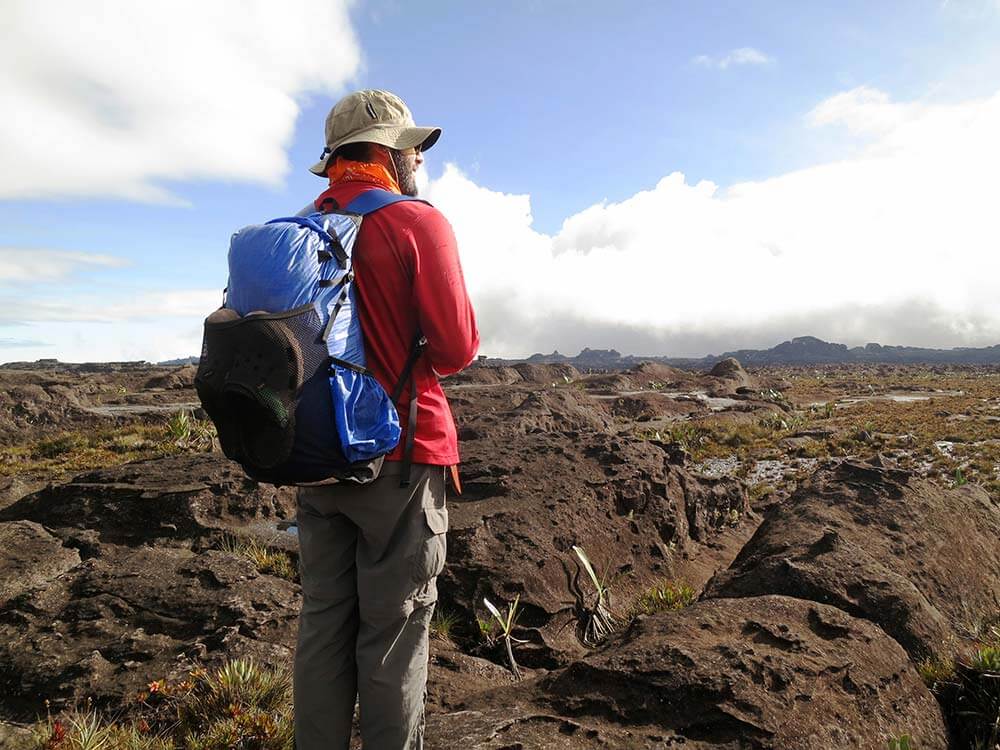LIGHTEN UP YOUR GEAR LOAD WITH THESE SUPER ULTRALIGHT ALTERNATIVES!
Over the past decades, I’ve had the chance to backpack in several settings, such as the Mojave Desert, the southeast woodlands, the San Bernardino Mountains, and the Sierra Mountains of California. I observed all types of hikers carrying all kinds of gear.
Base weight measures gear and clothing stowed inside or outside a backpack, excluding items worn and consumables such as food, water, and fuel. Lightweight is under 20 pounds, and ultralight is under 10 pounds. However, there is another category for sub-5 pounds called super ultralight, which is what I prefer.
SUB-4 POUNDS
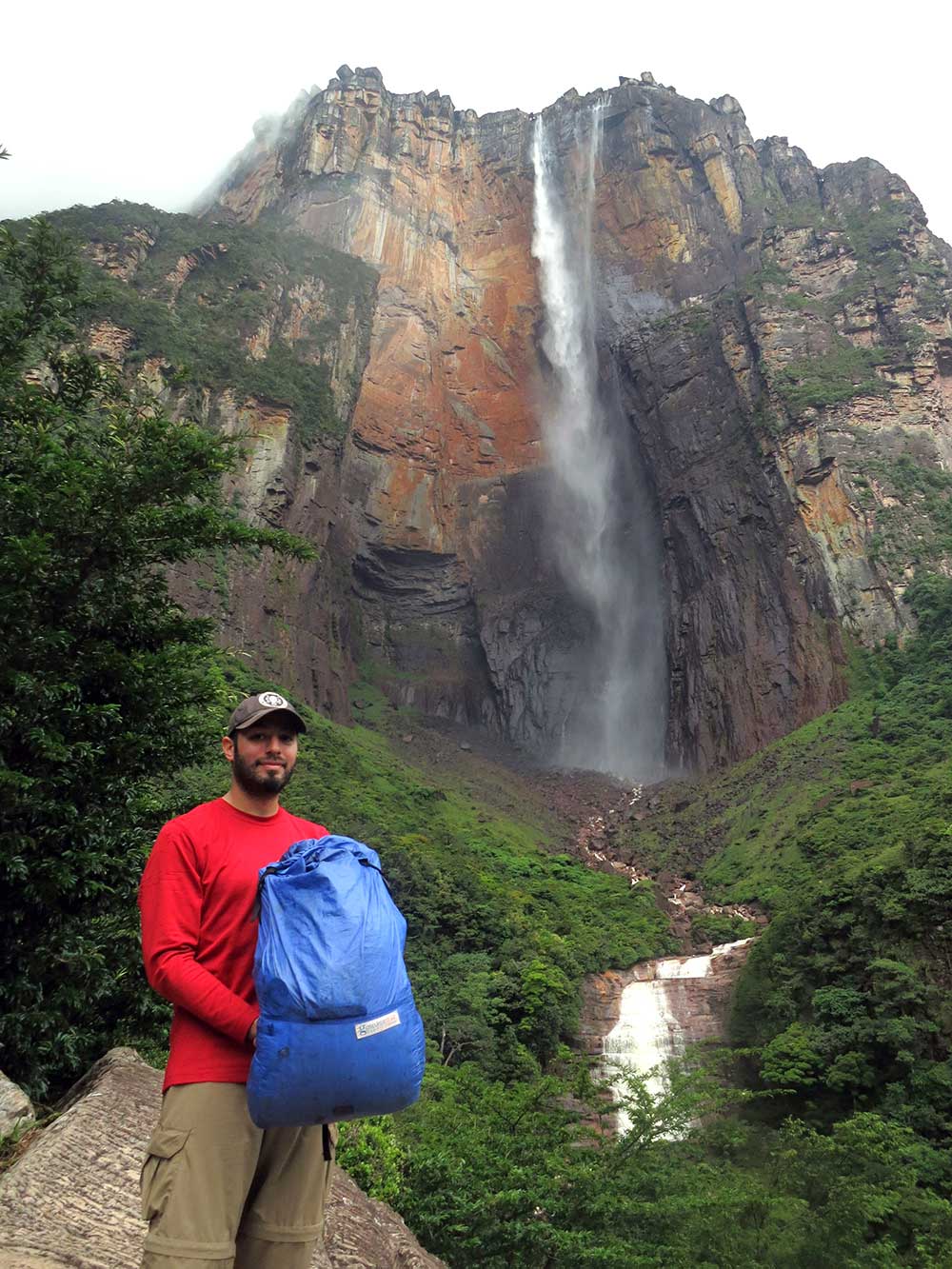
After my first two Grand Canyon backpacking trips and summiting California’s Mt. Whitney 14,500-foot peak twice in 2007—I got my gear dialed in. I use and make my gear—only the lightest.
I use a featherweight spinnaker backpack, homemade quilt, bivy, 5×7 Xenon Sil tarp, AAA flashlight, and torso-sized sleep pad. I like plastic bags (no stuff sacks), iodine tabs, 1-ounce fleece gloves/beanie, Platypus water bladder, micro-fleece pullover, soda can kettle, Supercat stove, Gorilla Tape first-aid kit, and I’m always comfortable. Not everyone is comfortable getting down this low, but there are other alternatives.
WHY CUT WEIGHT?
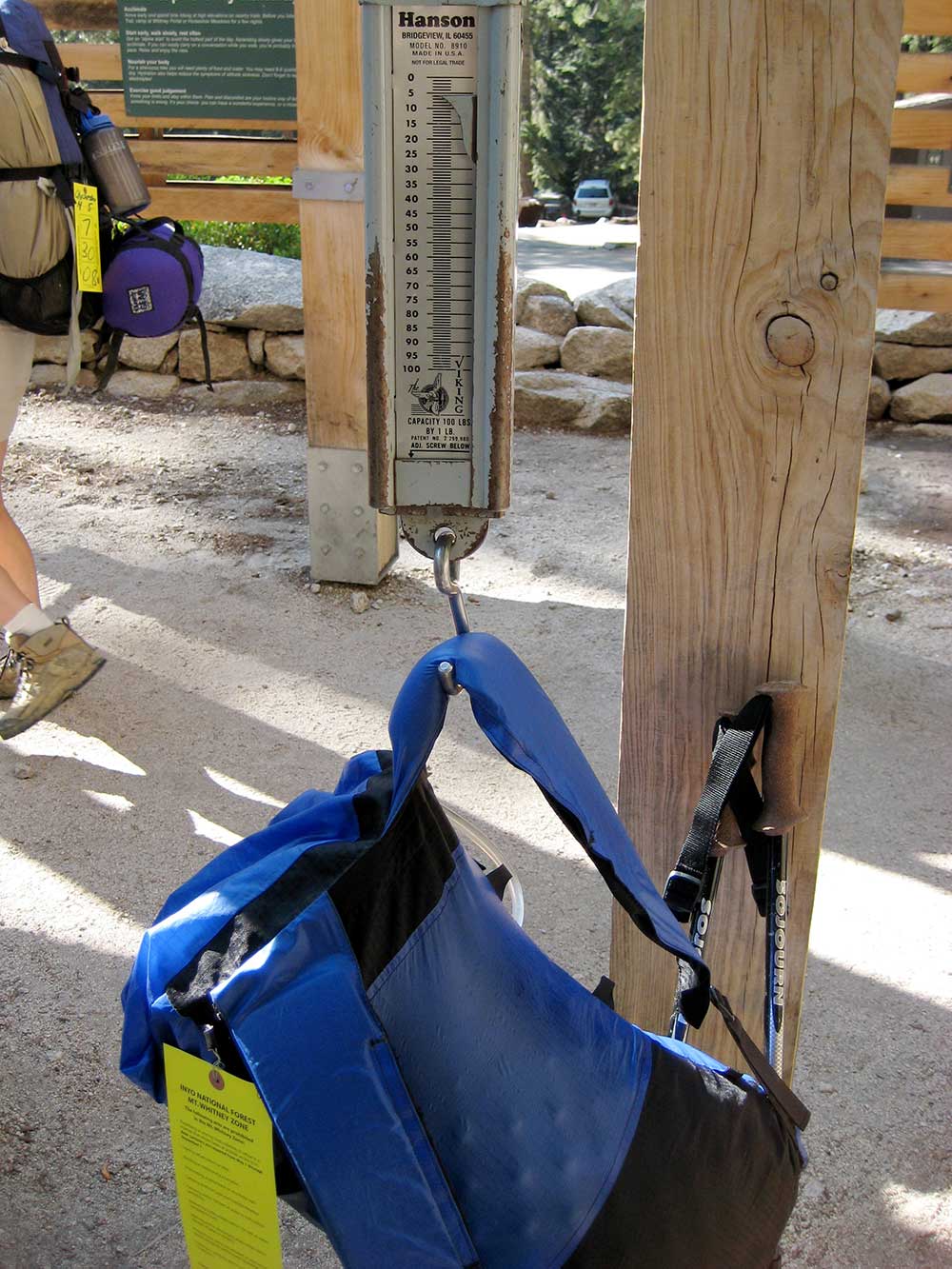
Sitting around camp and talking to others is an excellent way to see what they carry. After a few miles on the trail or even bushwhacking through thick forest to get to that particular fishing spot, you will think of every little thing you brought and didn’t need. Maybe it’s a bad back or a knee injury for some of us.
“After a few miles on the trail…you will think of every little thing you brought and didn’t need.”
Perhaps age is slowly creeping upon us. Whatever the reasons may be, less weight on our backs means additional comfort on the trail and more miles covered for backpackers looking to increase their mileage.
THE BIG FOUR
Walking into a sporting goods store can be overwhelming, especially if you don’t know much about gear. The choices are infinite. Unfortunately, the things that weigh the most are also what we need the most. Shelters, such as tents, usually are the heaviest. Backpacks are not far behind that. Of course, sleeping gear, including sleeping bags and sleeping pads, are not without weight issues. The last big four to cover the essentials is a water filter, as water is a priority for everyone on this planet.
Shelters
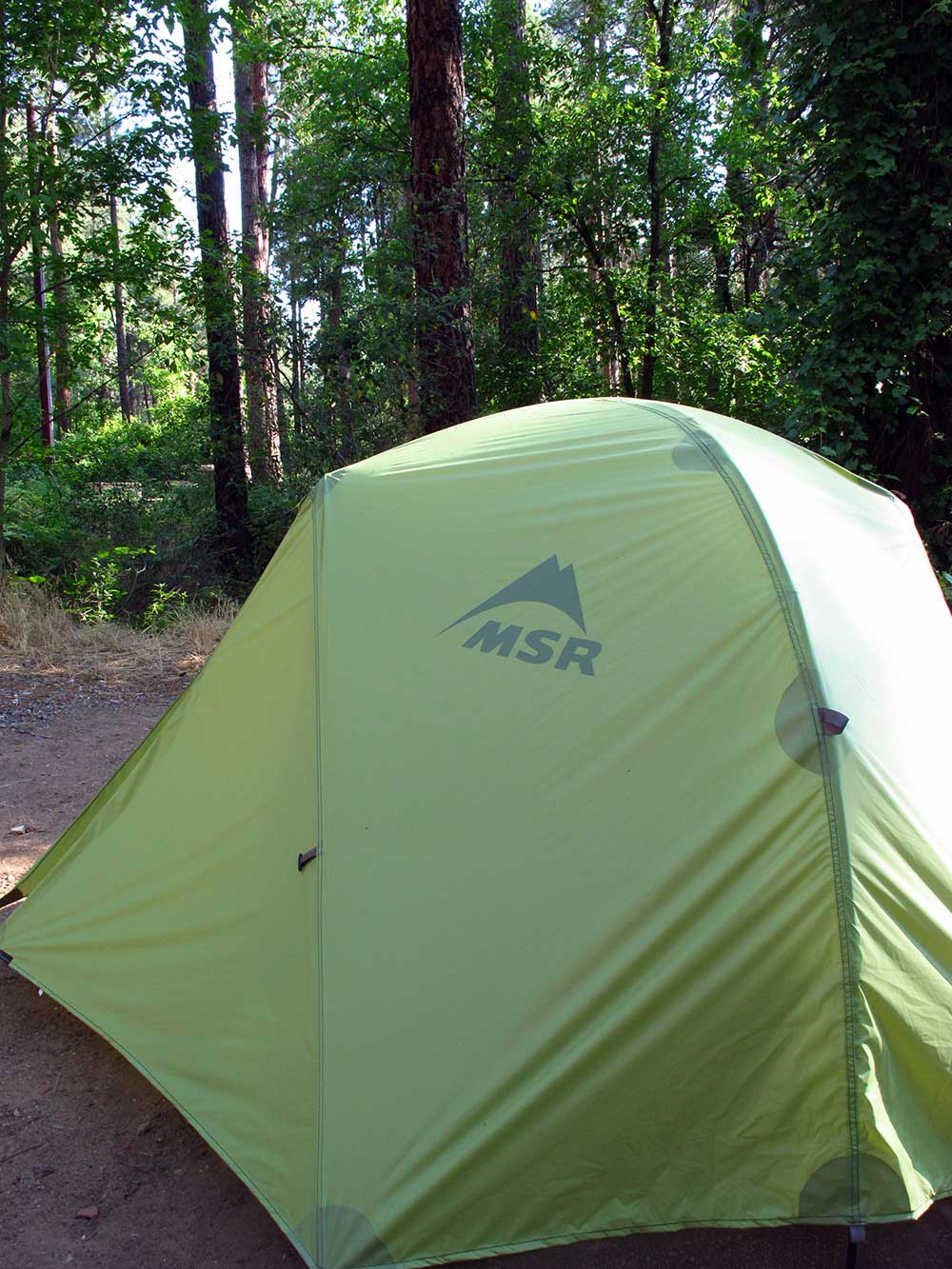
Carrying shelter, like a tent while backpacking or setting up a hunting camp, makes it easy to see that this is usually the heaviest of the big four. It is also the main security for people’s mental protection more than anything. MSR makes one of, if not the lightest, tents. The Carbon Reflex 1 is a double-wall solo tent that weighs 1 pound 9 ounces; that’s pretty light! The Carbon Reflex 2 is designed for two people and comes in at 2 pounds, finally breaking the 3-pound barrier that many other companies have been having difficulties getting past.
Super Ultralight Option: Try using a Silnylon poncho tarp, which serves as your rain gear/pack cover, and shelter. It can be pitched in various ways using trekking poles, sticks, and standing trees. I use a Xenon material tarp by Coalcracker Bushcraft that weighs 5.7 ounces—that’s hard to beat.
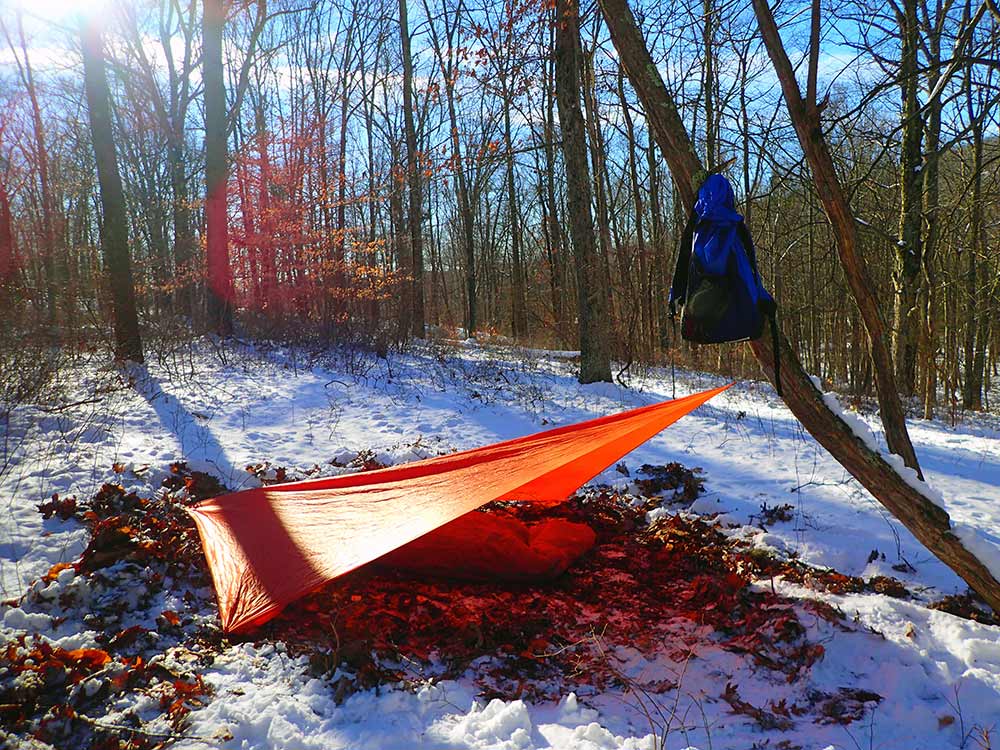
Backpacks
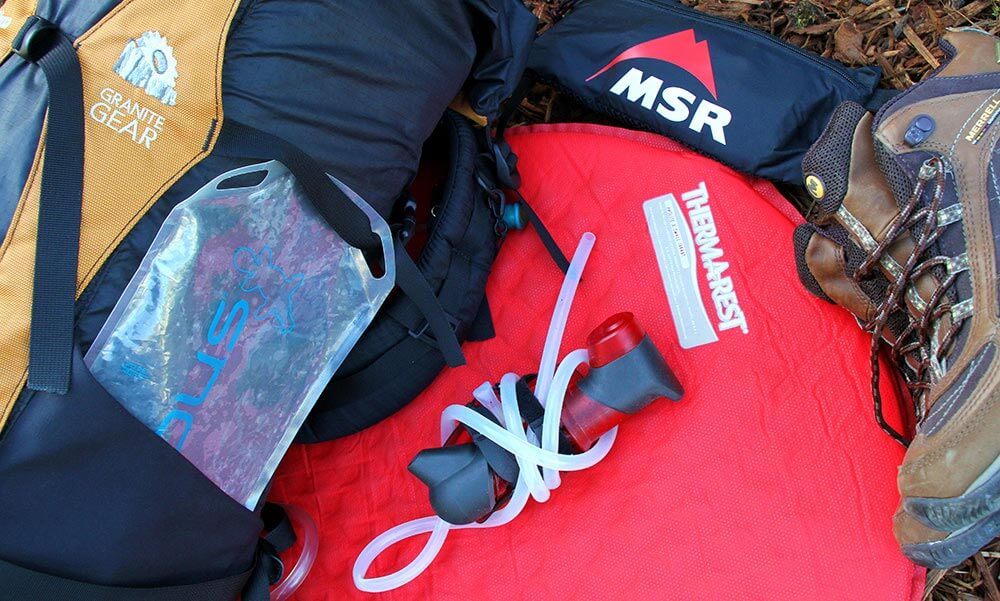
In the world of today’s backpacks, there are so many choices that even most gear freaks have trouble keeping up with the ever-changing models and trends. Granite Gear’s Virga is a rugged, lighter pack that comes to mind. The Virga is a lightweight pack that can hold 20 pounds comfortably. It weighs 1 pound 3 ounces and has a volume of 3,200 cubic inches. It can be mistreated if you are a brute with gear, and it has a suspension system with a sternum strap and hip belt often found on much heavier packs.
Super Ultralight Option: Gossamer Gear Murmur 36 Hyperlight (7.9 ounces)and Minimalist 19 (11 ounces) backpacks. I favor the Gossamer Gear Murmur Backpack, made with Spinnaker material. I have stripped down the extra straps, side pockets, and sleeping pad mesh pockets. It now weighs in at 5 ounces and is suitable for my base weight of under 4 pounds!
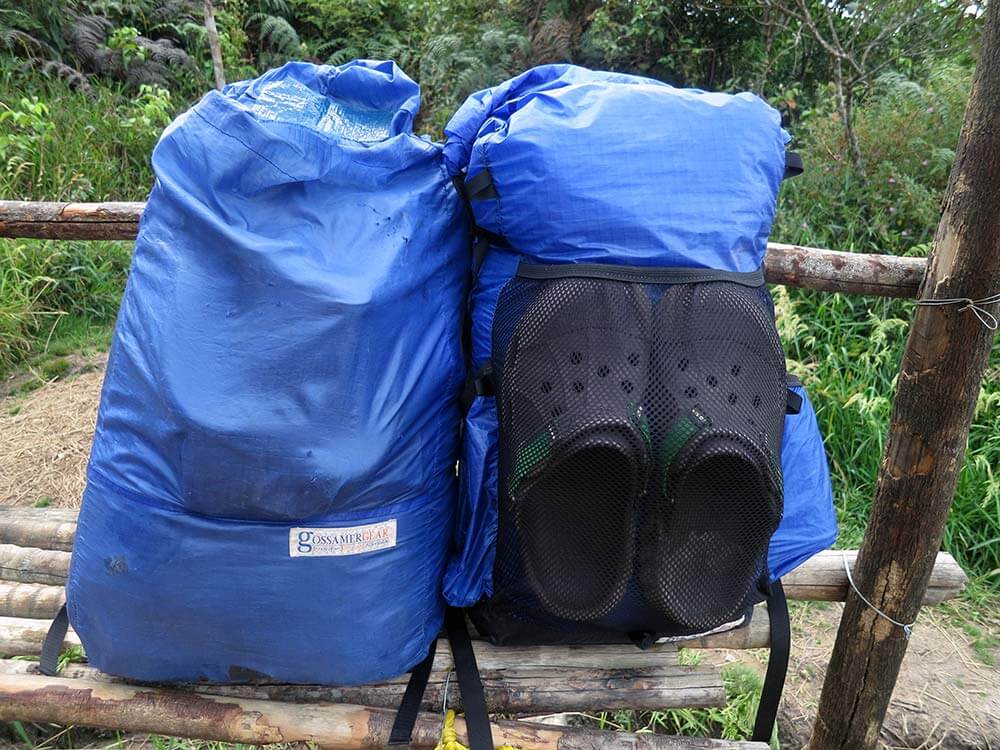
Sleeping Gear
The type of sleeping bag you choose will weigh heavily on the season. There is not enough space in this article to name all the different brands and why you should or should not use them. Instead, I will name a few I have used with great success.
Goose down vs. synthetic fill bags. Goose down is known for its lightweight and unparalleled comfort and warmth. Today’s synthetic fills have almost perfectly matched its counterpart in weight and warmth. However, when goose down gets wet, it becomes a sopping wet sack that gives you zero warmth.
This is where synthetic fill shines. It can be wet and still provide warmth and dry quickly to a certain extent. The Western Mountaineering company has a 32-degree F bag called the Summerlite, and it weighs 1 pound, 3 ounces. The Marmot Hydrogen sleeping bag has a 30-degree F rating and weighs only 1 pound.
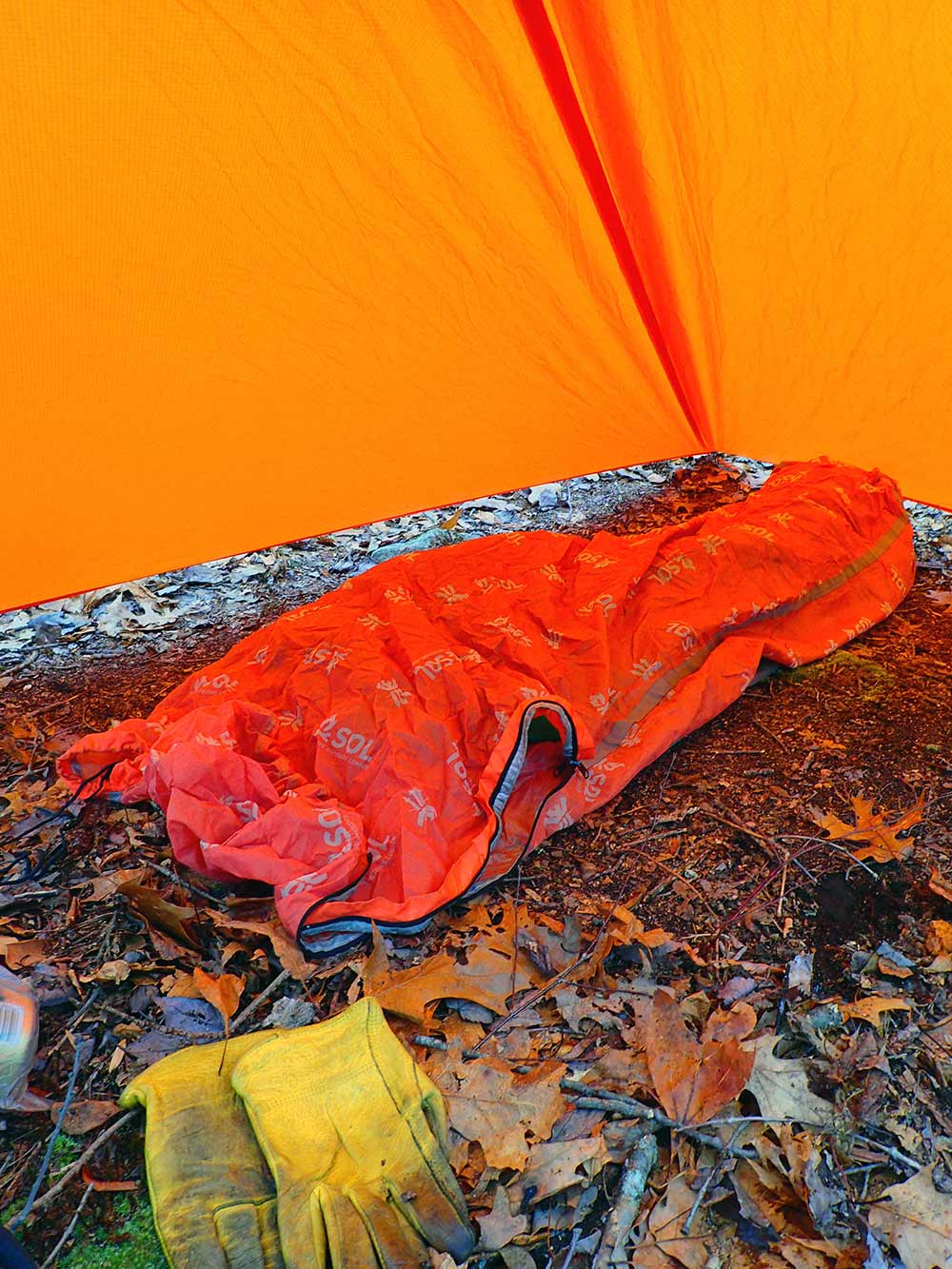
The popular Thermarest sleeping pads have a full-length inflatable pad that weighs 16 ounces and a torso-sized pad weighing in at a low 8 ounces for comfort and insulation outdoors. For many people, this is a creature comfort that they won’t go without, and, at those low weights, who can blame them?
Super Ultralight Option: Closed-cell foam pads are more resilient than inflatable pads. They take up less room, weigh as little as 3.4 ounces for a torso-sized piece, and are much cheaper than a Thermarest. Those on the extreme side may want to use a backpacker’s quilt (10-16 ounces for a 40-degree F rating) instead of a sleeping bag.
If using a lighter summer bag (preferably not a mummy bag), try only zipping up about 16 inches for a foot pocket. Turn it sideways and cover yourself like a blanket. Use a layering system consisting of any extra clothes you may have on you, like a beanie and light fleece top, to expand the rating of your sleep system. It’s the ultimate in multi-use practice and lightness—try it!
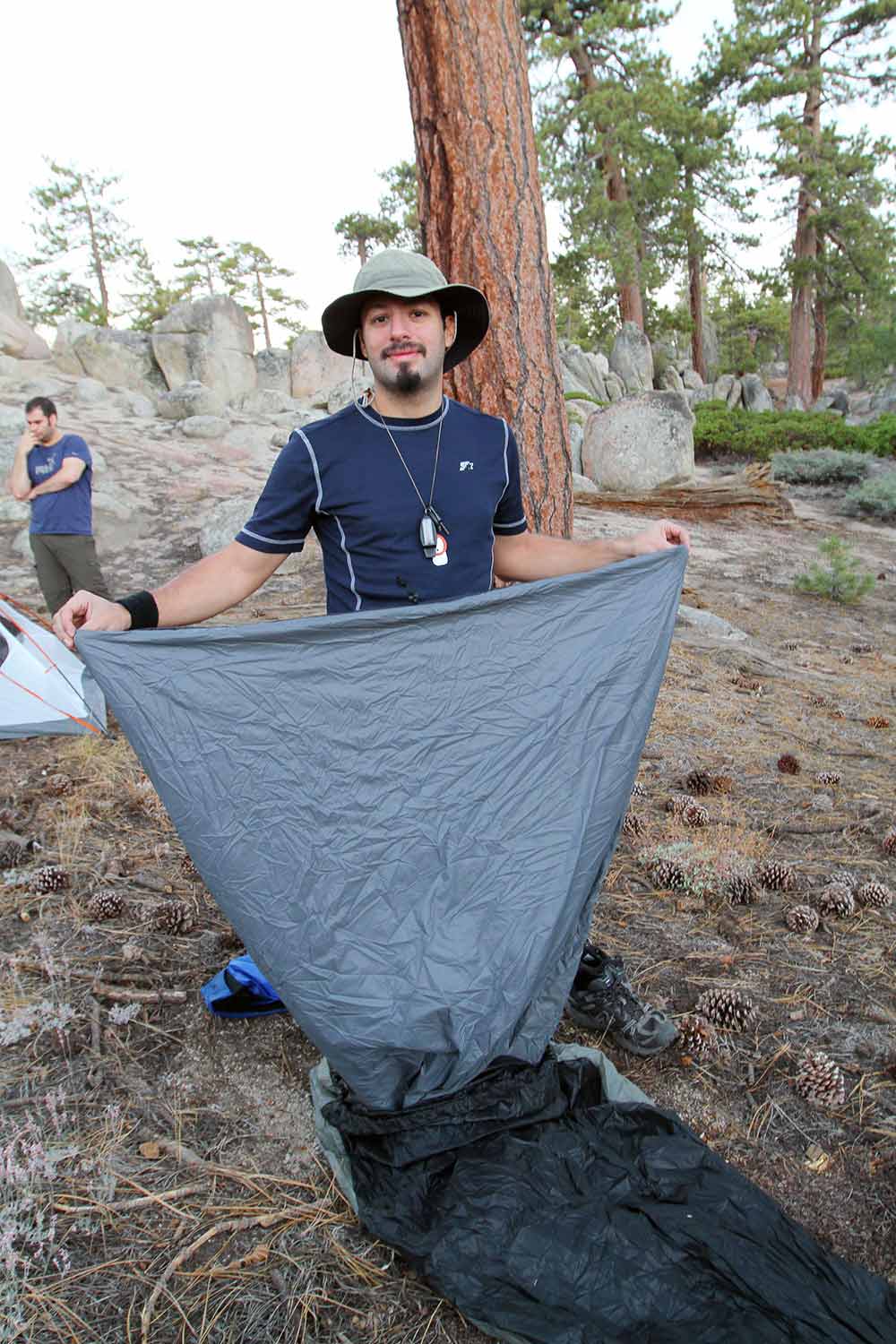
Water Filters
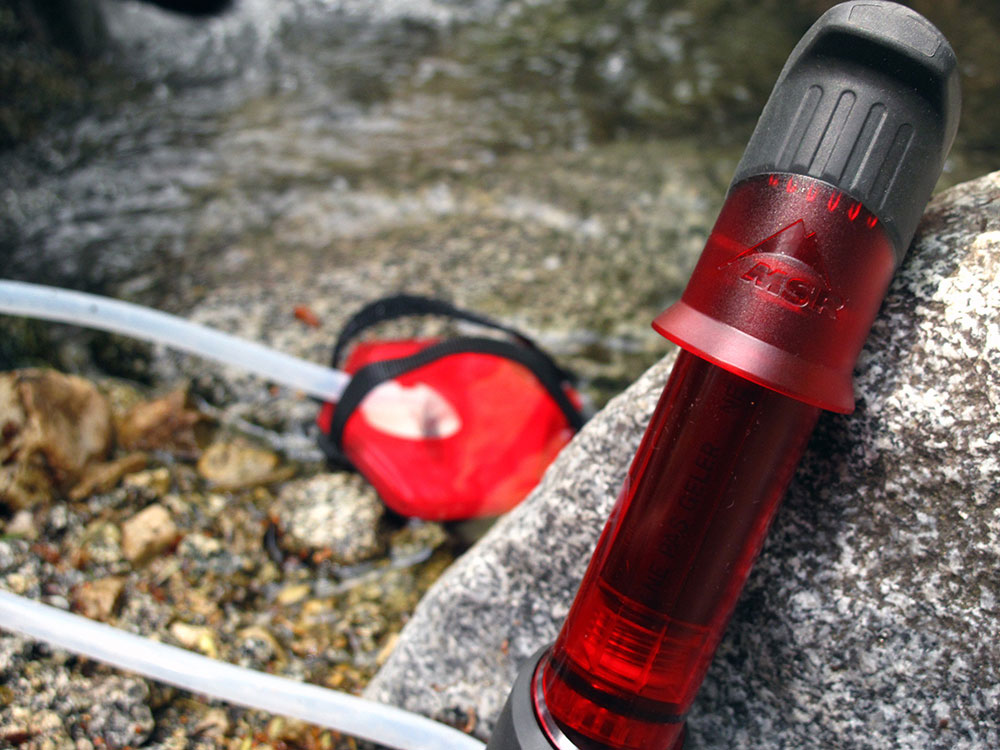
There has been an ongoing debate about using a water filter or tablets to purify water. Water is always more important than food in our outdoor adventures. You can’t get any lighter than tablets (iodine/bleach).
However, many don’t like the taste of chemically treated water or the idea of using it so often, not to mention the amount of time one must wait for the purification process. In some instances, it takes up to 30 minutes before water can be safely consumed. MSR offers a Hyper Flow microfilter that can put out 3 quarts of water a minute. It keeps out Cryptosporidium and Giardia and takes up very little space. The best part is it weighs only 8 ounces.
Super Ultralight Option: Water purification tablets, bleach drops, or boiling.
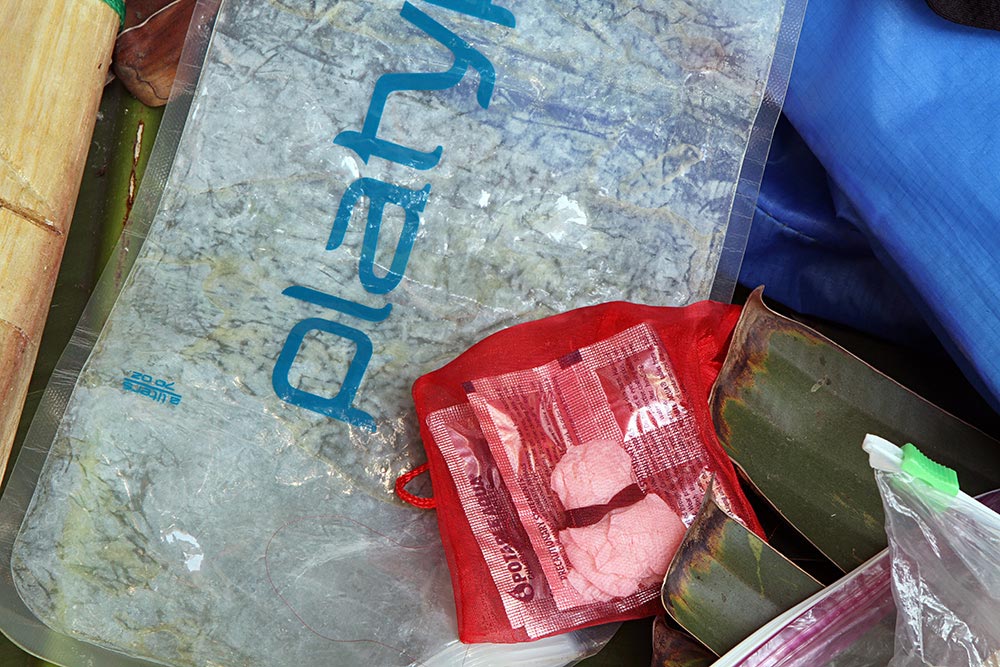
TAKE LESS DO MORE
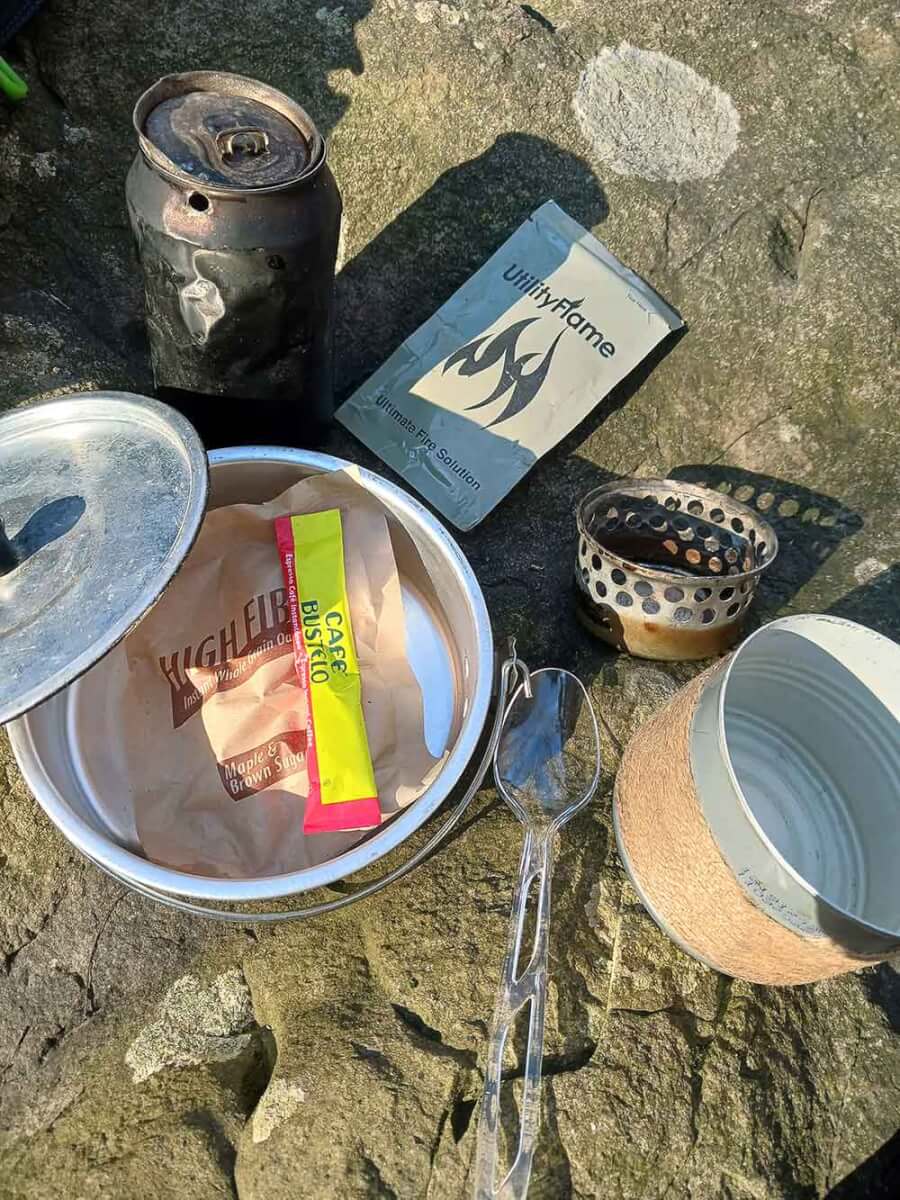
Get out and try a few of these options. Changing even one of the Big Four can lighten your load and make a tough outing more enjoyable. Your body will thank you.
SUPER ULTRALIGHT GEAR LIST
Four Seasons: Non-cook trips: Summer trips:
3 pounds, 14 oz 3 pounds, 11 oz 3 pounds, 1 oz
Backpack: Gossamer Gear Murmur Spinnaker (modified) 5 oz
Shelter: Coalcracker Bushcraft T6ZERO Tarp 5.7 oz
Sleep System: Quilt » Homemade (Momentum/Climashield XP),
11 oz; Bivy » SOL Escape Pro, 8.9 ounces; Pad » Gossamer Nightlight 3.4 oz
Water Treatment: Iodine (50 Tablets), 1 oz
Water Carry: Platypus, 1.7 oz
Cook Kit: 4.4 oz (Soda Can Kettle 0.5 oz, Idahoan Microwave
Cup 0.3 oz, Supercat Stove 0.2 oz, Plastic Spoon 0.1 oz, Aluminum Tin 3 oz).
Rain Gear: Frogg Toggs Jacket 5.6 oz
Fleece Top: REI Co-op 7.7 oz
Gloves: Fleece, 1.3 oz
Beanie: Fleece, 1.3 oz
Light: AAA Microstream, 1.3 oz, plus Velcro Headband
Travel Toothbrush: 0.4 oz
Duct Tape: Gorilla Tape roll, 0.7 oz
Tall Kitchen Trash Bag, Quart-size Ziploc, Plastic Grocery Bag: 0.3 oz
BASE WEIGHT DEFINITION
Base Weight is the total weight of your entire gear kit, excluding consumables which are food, water, and fuel. Consumables are not included because the amount varies by trip length and conditions.
A lightweight backpacker (LW) carries a base weight under 20 pounds.
An ultralight backpacker (UL) carries a base weight under 10 pounds.
A super ultralight backpacker (SUL) carries under 5 pounds.
SOURCES
Cascade Designs
www.cascadedesigns.com
Granite Gear
www.granitegear.com
Gossamer Gear
www.gossamergear.com
Western Mountaineering
www.westernmountaineering.com
Marmot
www.marmot.com
Coalcracker Bushcraft
www.coalcrackerbushcraft.com
SOL
www.surviveoutdoorslonger.com
A version of this article first appeared in the May 2022 issue of American Outdoor Guide Boundless.


